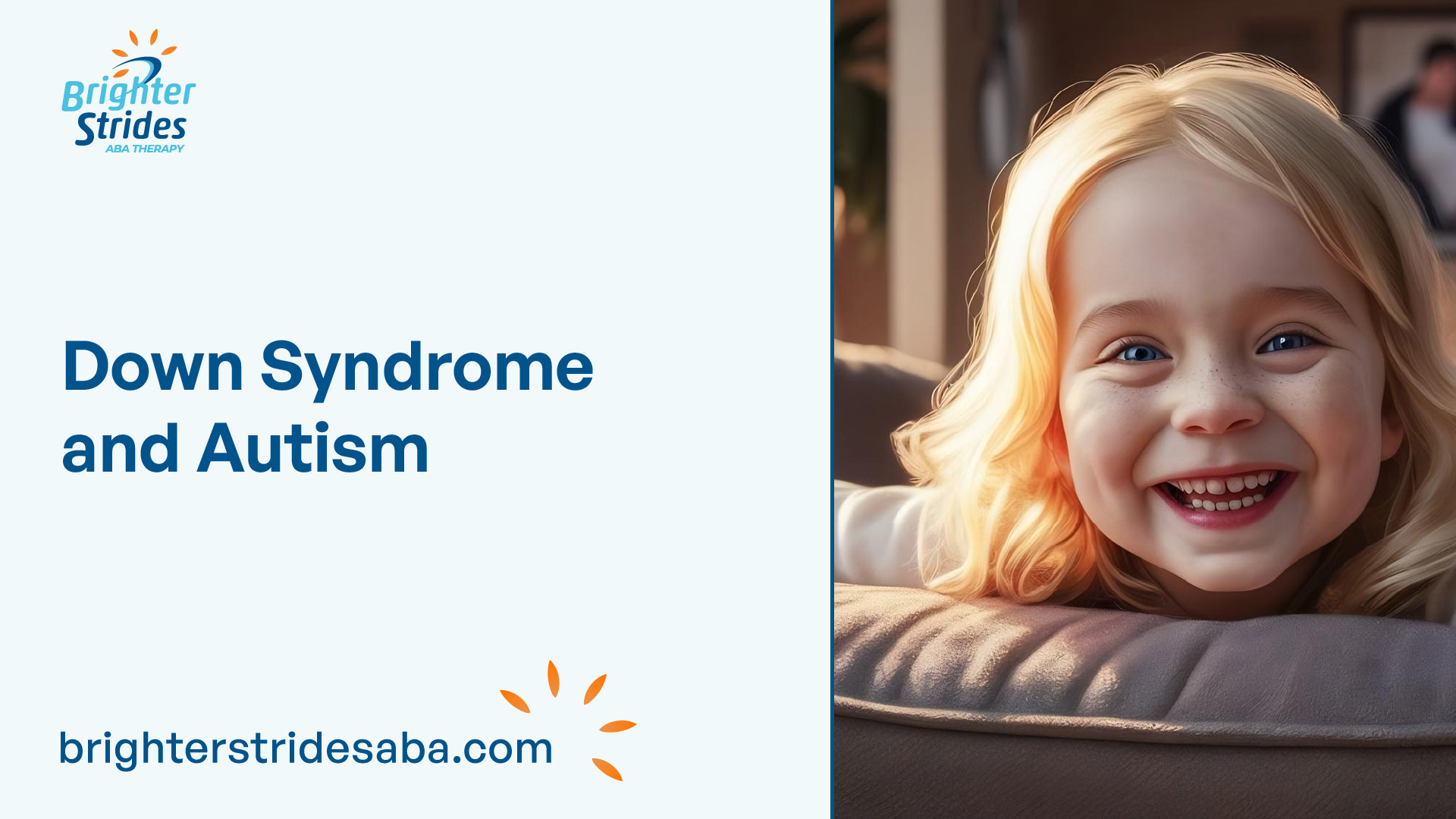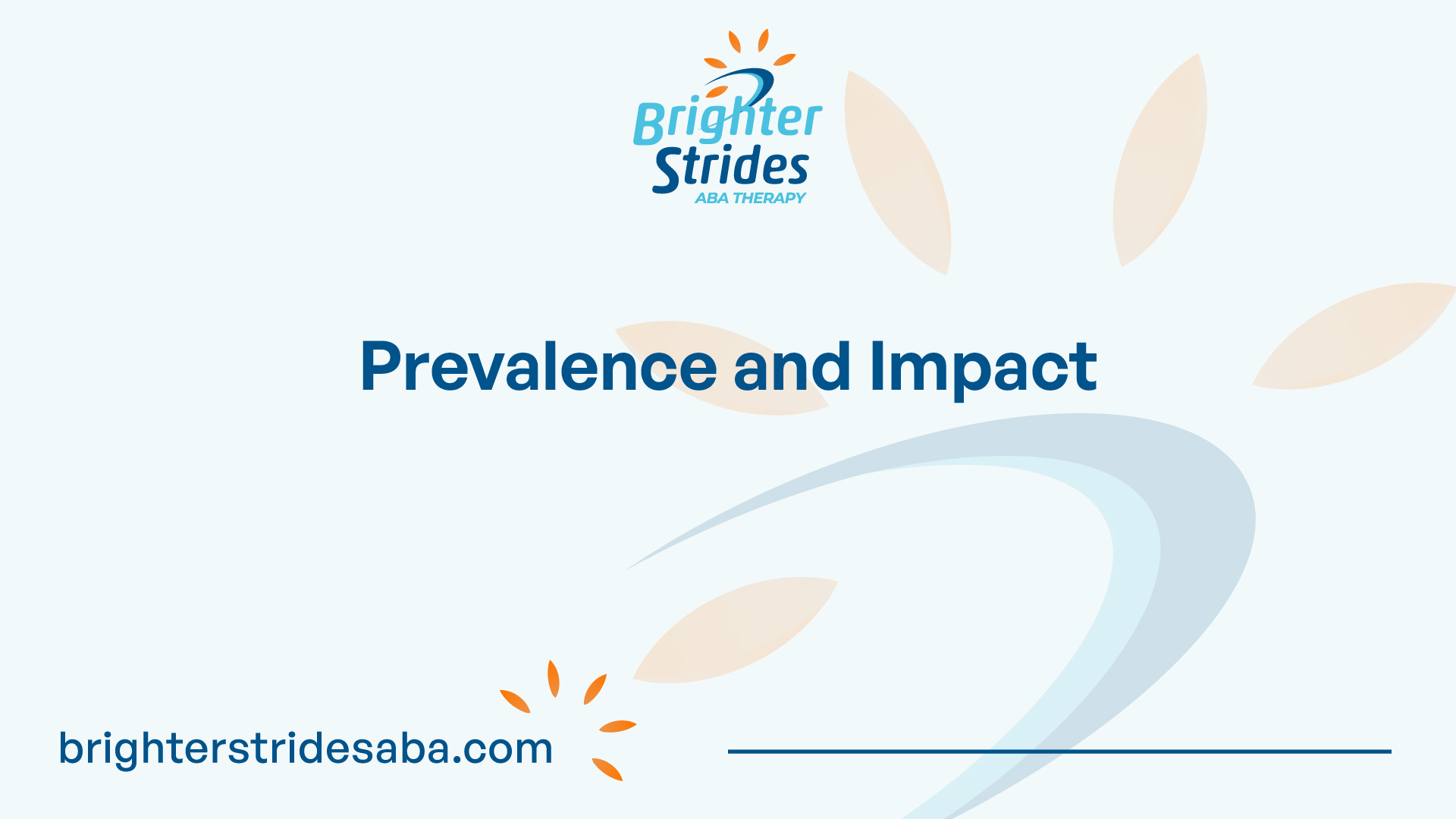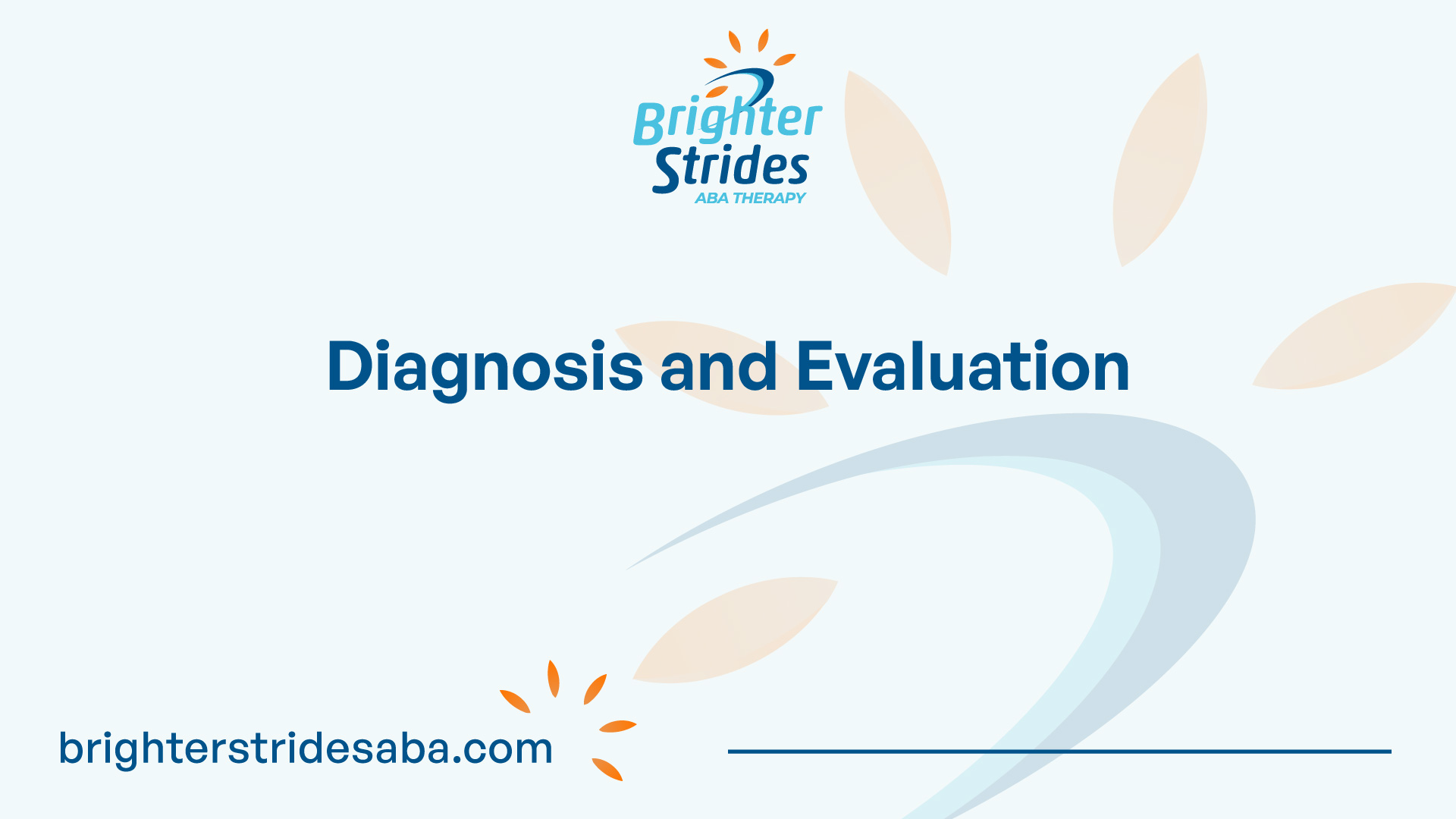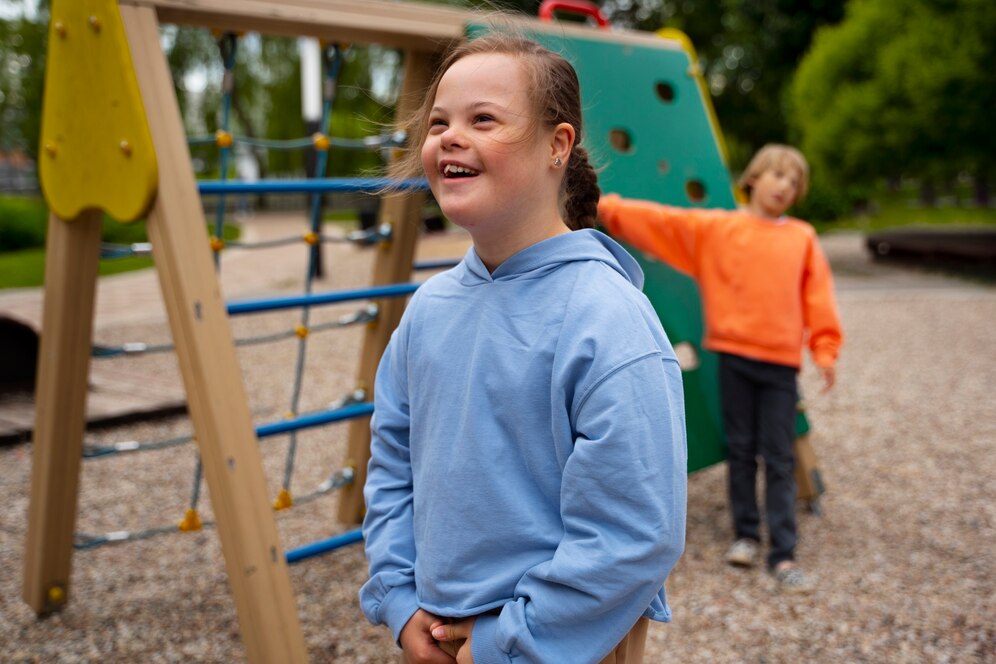Understanding Down Syndrome and Autism
When exploring the relationship between Down syndrome and autism, it’s important to gain insights into the dual diagnosis and understand the differentiating characteristics of these conditions.
Read about

Dual Diagnosis Insights
Research from the National Institutes of Health (NIH) indicates that approximately 16% of children with Down syndrome have a dual diagnosis of autism spectrum disorder (ASD) [1]. Similarly, approximately 20% of individuals with Down syndrome are also autistic, although these conditions are not mutually exclusive [2].
It is important to note that when autism occurs in someone with Down syndrome, the characteristics of autism, such as social and behavioral challenges, communication difficulties, and restricted interests, may be observed in addition to the symptoms of Down syndrome, such as intellectual disability and speech and language delays [3].
Differentiating Characteristics
Individuals with a dual diagnosis of Down syndrome and autism often exhibit characteristics that are distinct from those with Down syndrome alone. According to a study published in the National Center for Biotechnology Information (NCBI), individuals with both Down syndrome and autism spectrum disorder (DS+ASD) were more likely to be male and had higher odds of various medical conditions compared to individuals with Down syndrome alone. These conditions include constipation, gastroesophageal reflux, behavioral feeding difficulties, infantile spasms, and scoliosis.
Furthermore, the co-occurrence of autism in individuals with Down syndrome can result in additional challenges in social interactions, communication, and sensory sensitivities. These challenges may be more pronounced compared to individuals with Down syndrome without autism. It is important to consider these differentiating characteristics when providing support and interventions for individuals with a dual diagnosis.
By understanding the dual diagnosis and differentiating characteristics of Down syndrome and autism, we can better recognize the complexities that individuals with both conditions may experience. This knowledge can inform diagnosis, evaluation, and the development of tailored treatment and support strategies to meet the unique needs of individuals with Down syndrome and autism.
Prevalence and Impact
Understanding the prevalence and impact of the dual diagnosis of Down syndrome and autism is crucial in providing comprehensive care and support. In this section, we will explore the statistics and research findings surrounding this co-occurrence, as well as the medical conditions and challenges that individuals may face.
Read about: A Closer Look at Autism Prevalence in North Carolina

Statistics and Research Findings
Research from the NIH indicates that approximately 16% of children with Down syndrome have a dual diagnosis of autism [1]. It is important to note that while approximately 20% of people with Down syndrome are also autistic, these conditions are not mutually exclusive [2]. The co-occurrence of Down syndrome and autism presents a unique set of characteristics and challenges that require specialized attention and care.
Down syndrome is currently the most common genetic disorder in the United States, impacting approximately 1 in 700 babies born today [2]. When examining the prevalence of autism within the Down syndrome population, studies have shown varying rates. In a study of 562 individuals with Down syndrome, 13% had a co-occurring diagnosis of autism spectrum disorder (DS+ASD), with rates of autism in individuals with Down syndrome reported as high as 39%.
Medical Conditions and Challenges
Individuals with the dual diagnosis of Down syndrome and autism may face additional medical conditions and challenges compared to those with Down syndrome alone. Research has shown that individuals with both conditions are more likely to be male and have a higher likelihood of current or prior diagnoses of constipation, gastroesophageal reflux, behavioral feeding difficulties, infantile spasms, and scoliosis compared to individuals with Down syndrome alone.
These medical conditions can further complicate the overall well-being and development of individuals with the dual diagnosis. It is essential for healthcare professionals and caregivers to address these medical challenges in a holistic manner, considering the unique needs and characteristics of each individual.
Understanding the prevalence and impact of the dual diagnosis of Down syndrome and autism allows for more informed decision-making and tailored interventions to support individuals with these co-occurring conditions. By recognizing the medical conditions and challenges associated with this dual diagnosis, healthcare providers can provide appropriate care and support to enhance the quality of life for individuals with Down syndrome and autism.
Diagnosis and Evaluation
When it comes to the dual diagnosis of Down syndrome and autism, proper diagnosis and evaluation are crucial in order to provide appropriate support and interventions. This section will delve into the process of identifying these dual conditions and the formal evaluation procedures involved.

Identifying Dual Conditions
Research from the NIH indicates that approximately 16% of children with Down syndrome have a dual diagnosis of autism. It is important to recognize that although there is an overlap between Down syndrome and autism, they are distinct conditions with their own unique characteristics.
Identifying the presence of both Down syndrome and autism can be challenging due to the overlapping features and complexities involved. Professionals, such as pediatricians, developmental pediatricians, and psychologists, play a crucial role in the diagnostic process. They carefully assess the individual’s developmental milestones, behavior patterns, and social interactions to determine if both conditions are present.
Formal Evaluation Process
The formal evaluation process for the dual diagnosis of Down syndrome and autism involves a comprehensive assessment conducted by a multidisciplinary team. This team typically consists of professionals from various fields, such as psychologists, speech therapists, occupational therapists, and medical specialists.
The evaluation process may include the following components:
- Developmental History: Gathering information about the individual’s early developmental milestones, medical history, and family history.
- Behavioral Observations: Observing the individual’s behavior, social interactions, and communication skills in various settings.
- Standardized Assessment Tools: Utilizing standardized assessment tools specifically designed to evaluate autism spectrum disorder and cognitive abilities.
- Collaboration with Parents/Caregivers: Involving parents or caregivers in the evaluation process by gathering their input and observations regarding the individual’s behavior and development.
By conducting a thorough evaluation, professionals can determine if an individual has both Down syndrome and autism. This information is essential for developing personalized intervention strategies and support plans that address the unique needs and challenges associated with the dual diagnosis.
It is worth noting that individuals with the dual diagnosis of Down syndrome and autism often have higher rates of co-occurring medical conditions such as constipation, gastroesophageal reflux, behavioral feeding difficulties, infantile spasms, and scoliosis [4]. Therefore, comprehensive evaluations should also include assessments related to these medical conditions to ensure holistic care and support.
The diagnosis and evaluation process for the dual diagnosis of Down syndrome and autism require expertise, collaboration, and a comprehensive understanding of both conditions. Through proper identification and evaluation, individuals can receive the necessary support and interventions tailored to their unique needs.
Behavioral and Social Aspects
Understanding the behavioral and social aspects of individuals with both Down syndrome and autism is essential to provide appropriate support and interventions. While there may be overlapping characteristics, it’s important to recognize the unique challenges and strengths associated with each condition.
Social Interactions and Communication
People with both Down syndrome and autism may experience difficulties with social interactions and communication. Individuals with Down syndrome typically have a friendly and outgoing nature but may struggle with certain social skills, such as making eye contact, understanding social cues, and interacting with others [5]. On the other hand, individuals with autism often face challenges in social interactions, such as difficulty initiating and maintaining conversations, understanding nonverbal cues, and recognizing social norms.
The language abilities of individuals with Down syndrome and autism can also vary. People with Down syndrome without autism may show some language delays but effectively use gestures, have a range of facial expressions, and play well with others. However, individuals with Down syndrome and autism may have more significant language delays, especially in the social use of language, and limited use of gestures, facial expressions, and play skills [3].
Sensory Sensitivities and Behaviors
Sensory sensitivities and behaviors are common in both Down syndrome and autism. Individuals with Down syndrome may have sensory preferences or sensitivities, such as a preference for certain textures or aversion to loud noises. Similarly, individuals with autism often experience sensory sensitivities and may be hypersensitive or hyposensitive to stimuli like touch, sound, or light.
Behaviors associated with both conditions can manifest differently. People with Down syndrome may exhibit behaviors related to their cognitive and physical variances, such as repetitive movements or self-stimulation. For individuals with autism, behaviors can include repetitive behaviors, restricted interests, and difficulties with transitions or changes in routines.
Understanding and addressing these behavioral and social aspects require tailored strategies and interventions. Speech and language therapy, social skills training, sensory integration techniques, and behavioral interventions can be effective in improving social interactions, communication skills, and managing sensory sensitivities for individuals with both Down syndrome and autism. It’s important to work closely with professionals who have expertise in both conditions to develop an individualized plan that meets the specific needs of each person.
Treatment and Support
When it comes to the treatment and support of individuals with Down syndrome and autism, it’s important to consider a range of therapeutic interventions and specialized therapies. These can help address the unique needs and challenges associated with both conditions. Two key approaches that have shown to be beneficial are therapeutic interventions and speech and language therapy.
Therapeutic Interventions
Therapeutic interventions encompass a variety of strategies aimed at improving the overall well-being and quality of life for individuals with Down syndrome and autism. These interventions can include occupational therapy, physical therapy, and behavioral interventions.
Occupational therapy focuses on developing skills necessary for daily living and enhancing an individual’s independence. It may involve activities that promote fine motor skills, sensory integration, self-care, and social interactions. Physical therapy, on the other hand, aims to improve gross motor skills, coordination, strength, and balance.
Behavioral interventions, such as Applied Behavior Analysis (ABA), can be particularly effective in addressing challenging behaviors and fostering positive changes. ABA focuses on modifying behavior through reinforcement techniques and structured interventions.
The specific therapeutic interventions recommended for an individual will depend on their unique needs, strengths, and challenges. It is important to work with a multidisciplinary team of professionals to develop a comprehensive treatment plan tailored to the individual’s specific requirements.
Speech and Language Therapy
Speech and language therapy plays a crucial role in supporting individuals with Down syndrome and autism in their communication development. Both conditions can lead to difficulties in expressive and receptive communication, social interactions, and language skills.
For individuals with Down syndrome without autism, language delays may be present, but they often effectively use gestures, demonstrate a range of facial expressions, and engage well with others. However, individuals with DS-ASD (Down syndrome with autism spectrum disorder) may experience more significant language delays, particularly in the social use of language. They may also have limited use of gestures, facial expressions, and play skills.
Speech and language therapy for individuals with Down syndrome and autism focuses on improving communication skills, including speech articulation, vocabulary development, sentence formation, social communication, and pragmatic language skills. Therapists may use a combination of techniques, such as visual supports, augmentative and alternative communication (AAC) devices, and social skills training, to enhance communication abilities.
By incorporating speech and language therapy into the treatment plan, individuals with Down syndrome and autism can develop effective communication strategies, improve social interactions, and enhance their overall quality of life.
It’s important to remember that treatment and support should be individualized, taking into account the specific needs, strengths, and challenges of each person. A comprehensive approach that includes therapeutic interventions and speech and language therapy can help individuals with Down syndrome and autism reach their full potential and lead fulfilling lives.
Individual Variances and Complexity
Autism and Down syndrome are distinct conditions, each with their own set of characteristics and variances. Understanding the individual variability within these conditions is crucial to provide tailored support and interventions.
Cognitive and Physical Variances
When comparing cognitive and physical variances between autism and Down syndrome, significant differences become apparent. Individuals with Down syndrome often exhibit distinct physical features, such as a flattened facial profile, small eyes, and a small nose Connected Speech Pathology. These physical characteristics may vary between individuals Golden Care Therapy.
In terms of cognitive abilities, individuals with Down syndrome typically experience mild to moderate cognitive impairment and intellectual disabilities. They may face challenges in problem-solving, abstract reasoning, memory, attention, and language development Connected Speech Pathology. On the other hand, autism is not always associated with intellectual disabilities, and individuals with autism can have a wide range of cognitive abilities.
Co-Occurrence Complexity
While autism and Down syndrome are separate conditions, they can co-occur in some individuals, highlighting the complexity of neurodevelopmental conditions Behavioral Innovations. Co-occurring autism and Down syndrome can present unique challenges and require specialized support and interventions to address the overlapping characteristics and needs of the individual.
Understanding the individual variances and complexities within autism and Down syndrome is essential for providing appropriate care, interventions, and support. By recognizing and respecting the diverse characteristics and needs of individuals with these conditions, we can create a more inclusive and supportive environment for everyone.

 We've just released an article!
Check out our blog!
We've just released an article!
Check out our blog!



